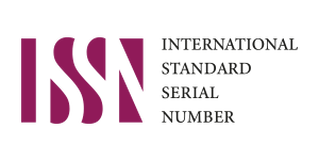Antioxidant Activity and Inhibition of Α-Glucosidase from Yellow Root Extract (Fatuoa Pilosa Gaudich) In Vitro
Abstract
Keywords
Full Text:
PDFReferences
AG, H. B. B. (1994). Pharmacology of α"glucosidase inhibition. European Journal of Clinical Investigation, 24(3 S), 3-10. https://doi.org/10.1111/j.1365-2362.1994.tb02249.x
Badarinath, A. V, Rao, K. M., Madhu, C., Chetty, S., Ramkanth, S., Rajan, T. V. S., & Gnanaprakash, K. (2010). A Review on In-vitro Antioxidant Methods: Comparisions, Correlations and Considerations. In International Journal of PharmTech Research CODEN (Vol. 2, Issue 2).
Bisswanger, Hans. (2008). Enzyme kinetics : principles and methods. Wiley-VCH.
Chiang, C.-C., Cheng, M.-J., Peng, C.-F., Huang, H.-Y., & Chen, I.-S. (2010). A Novel Dimeric Coumarin Analog and Antimycobacterial Constituents from Fatoua pilosa.
CHUGH, C. A., MEHTA, S., & DUA, H. (2012). Phytochemical Screening and Evaluation of Biological Activities of Some Medicinal Plants of Phagwara, Punjab " . https://www.researchgate.net/publication/234079737
Farnsworth, N. R. (1966). Biological and Phytochemical Screening of Plants. In JOURNAL O F Pharmaceutical Sciences M ~ T c ~ (Vol. 55, Issue 3).
Hanani, E., Munim, A., & Sekarini, R. (2005). IDENTIFIKASI SENYAWA ANTIOKSIDAN DALAM SPONS CALLYSPONGIA SP DARI KEPULAUAN SERIBU. Majalah Ilmu Kefarmasian, 2(3), 127-133. https://doi.org/10.7454/psr.v2i3.3389
Hasim, H., Andrianto, D., Lestari, E. D., & Faridah, D. N. (2017). Aktivitas antioksidan ekstrak sulur buah naga putih (Hylocereus undatus) dengan metode DPPH dan Rancimat. Jurnal Gizi Dan Pangan, 12(3), 203-210. https://doi.org/10.25182/jgp.2017.12.3.203-210
Javanmardi, J., Stushnoff, C., Locke, E., & Vivanco, J. M. (2003). Antioxidant activity and total phenolic content of Iranian Ocimum accessions. Food Chemistry, 83(4), 547-550. https://doi.org/10.1016/S0308-8146(03)00151-1
Kadifkova Panovska, T., Kulevanova, S., & Stefova, M. (2005). In vitro antioxidant activity of some Teucrium species (Lamiaceae).
Kim, K. Y., Nam, K. A., Kurihara, H., & Kim, S. M. (2008). Potent α-glucosidase inhibitors purified from the red alga Grateloupia elliptica. Phytochemistry, 69(16), 2820-2825. https://doi.org/10.1016/j.phytochem.2008.09.007
Seo, S.-Y., Sancheti, S., & Sancheti, S. (2009). Chaenomeles Sinensis: A Potent α-and β-Glucosidase Inhibitor. American Journal of Pharmacology and Toxicology, 4(1), 8-11.
Standar Nasional Indonesia. (1992). Cara Uji Makanan dan Minuman. Badan Standar Nasional .
Stankovic, M. S., Niciforovic, N., Topuzovic, M., & Solujic, S. (2011). Total phenolic content, flavonoid concentrations and antioxidant activity, of the whole plant and plant parts extracts from Teucrium montanum L. var. montanum, f. supinum (L.) reichenb. Biotechnology and Biotechnological Equipment, 25(1), 2222-2227. https://doi.org/10.5504/bbeq.2011.0020
Sugiwati, S., Setiasih, S., & Efy Afifah, dan. (2009). ANTIHYPERGLYCEMIC ACTIVITY OF THE MAHKOTA DEWA [Phaleria macrocarpa (Scheff.) Boerl.] LEAF EXTRACTS AS AN ALPHA-GLUCOSIDASE INHIBITOR (Vol. 13, Issue 2).
Teh, S. S., El-Din Bekhit, A., & Birch, J. (2014). Antioxidative polyphenols from defatted oilseed cakes: Effect of solvents. Antioxidants, 3(1), 67-80. https://doi.org/10.3390/antiox3010067
Vongsak, B., Sithisarn, P., Mangmool, S., Thongpraditchote, S., Wongkrajang, Y., & Gritsanapan, W. (2013). Maximizing total phenolics, total flavonoids contents and antioxidant activity of Moringa oleifera leaf extract by the appropriate extraction method. Industrial Crops and Products, 44, 566-571. https://doi.org/10.1016/j.indcrop.2012.09.021
Yoshino, M., & Murakami, K. (2009). A graphical method for determining inhibition constants. Journal of Enzyme Inhibition and Medicinal Chemistry, 24(6), 1288-1290. https://doi.org/10.3109/14756360902829766
Zhang, H., Wang, G., Beta, T., & Dong, J. (2015). Inhibitory properties of aqueous ethanol extracts of propolis on alpha-glucosidase. Evidence-Based Complementary and Alternative Medicine, 2015. https://doi.org/10.1155/2015/587383
DOI: https://doi.org/10.34312/jambchem.v5i2.20503
Refbacks
- There are currently no refbacks.
Copyright (c) 2023 Jambura Journal of Chemistry
EDITORIAL OFFICE


This work is licensed under a Creative Commons Attribution-NonCommercial 4.0 International License.



